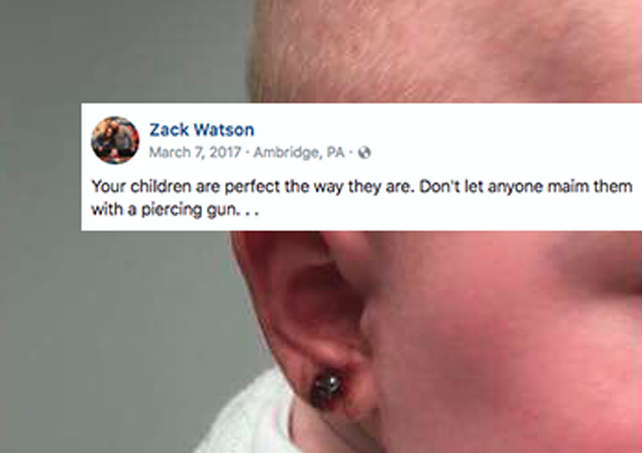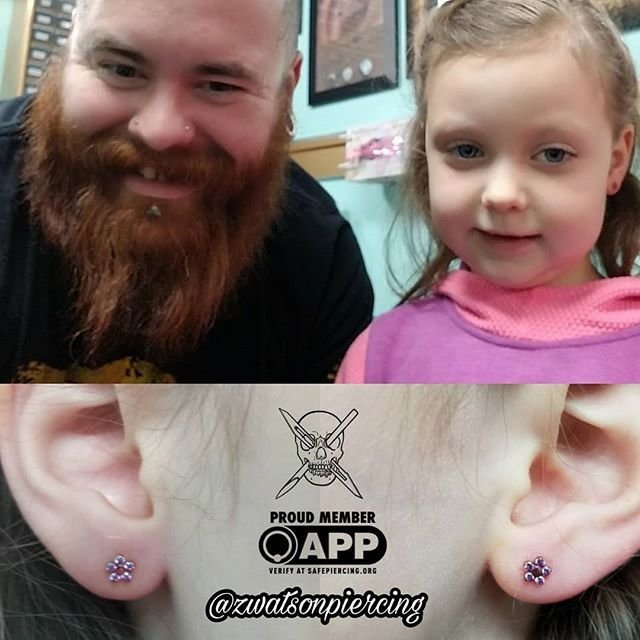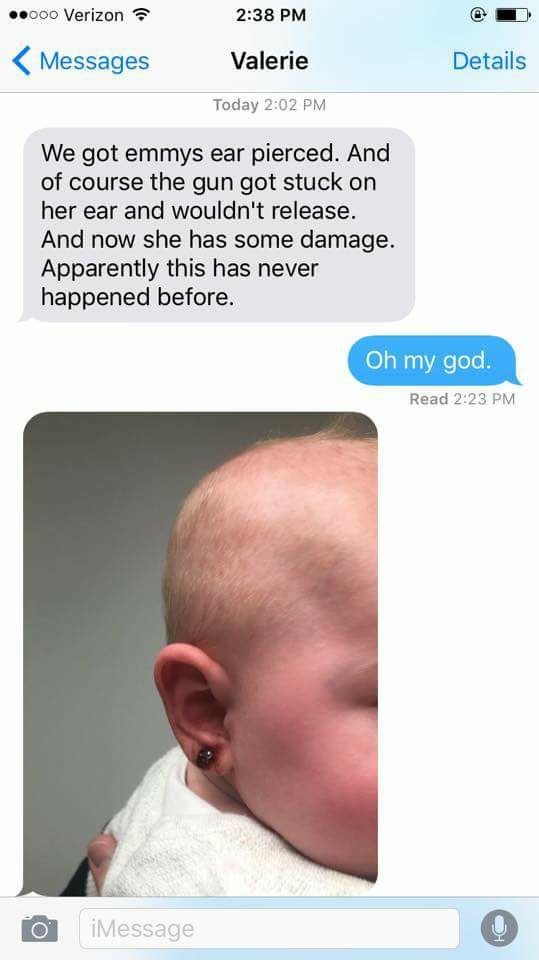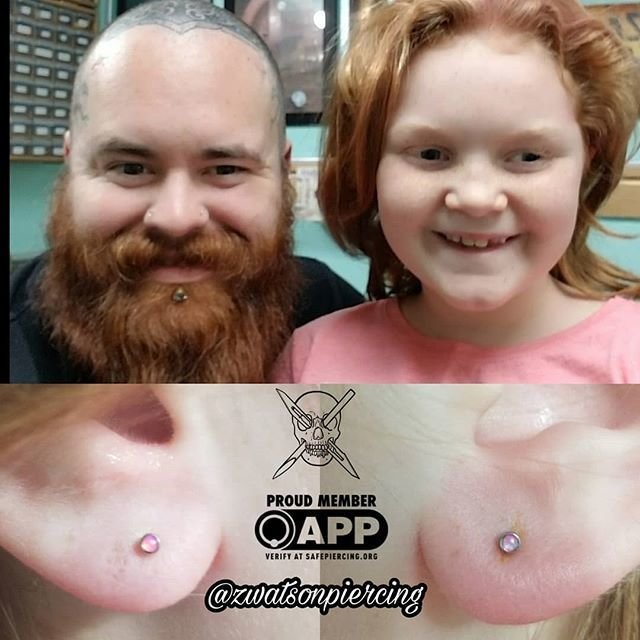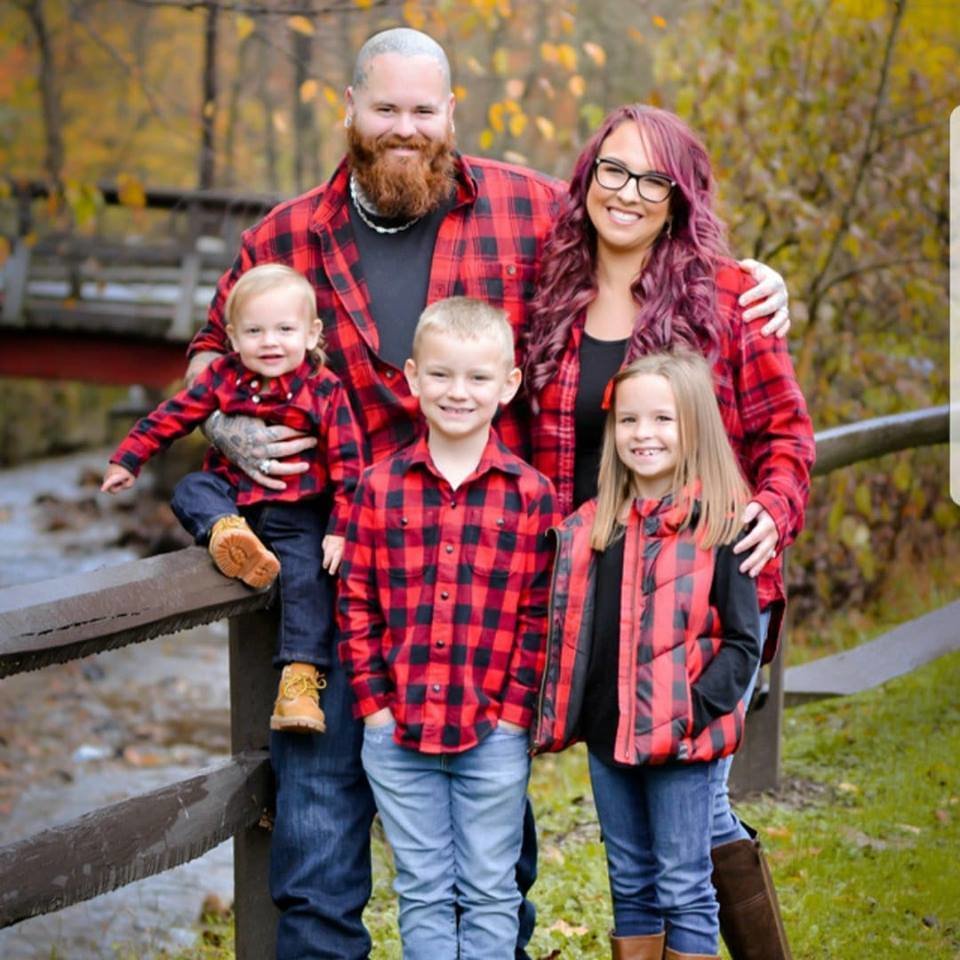Fortunately, Watson says the baby’s ear has healed, and despite scarring, she can get her ear re-pierced again later in life is she chooses. “The whole thing was pretty traumatic,” he says. “They used different unclean objects to pry the cartridge off of the ear. The parents did learn a valuable lesson the hardest way imaginable.” More from CafeMom: This Viral & Graphic Circumcision Post Is Making Parents Think Twice Watson also doesn’t believe in piercing infants’ skin when their immune system is still developing. “Immune systems are generally weaker in infants, so compromising the skin — which is the first line of defense — for purely aesthetic reasons seems silly. The risk isn’t worth the reward,” he says. “Also, your ears grow until the day you die. Where you pierce as an infant can shift and look terrible or prevent future stretching.” According to the Association of Professional Piercers (APP), piercing guns can’t be sterilized between clients in a medically sufficient way to keep contamination, like the hepatitis virus, from being passed from one person to the next. “We consider unsafe any procedure that places vulnerable tissue in contact with either non-sterile equipment or jewelry that is not considered medically safe for long-term internal wear. Such procedures place the health of recipients at an unacceptable risk,” it says on the APP’s website. “While piercing guns may seem to be a quick, easy and convenient way of creating holes, they have major drawbacks in terms of sterility, tissue damage and inappropriate jewelry design.” More from CafeMom: This Mom Followed Car Seat ‘Requirements’ & Now Her Girl Is Internally Decapitated Watson’s wife is currently pregnant with their second baby girl. Although he may not know what life with four kids is like, there’s one thing he knows for sure: “She will not have her ears pierced until she is old enough to ask for them herself and have a understanding about what the procedure will entail,” he says.
